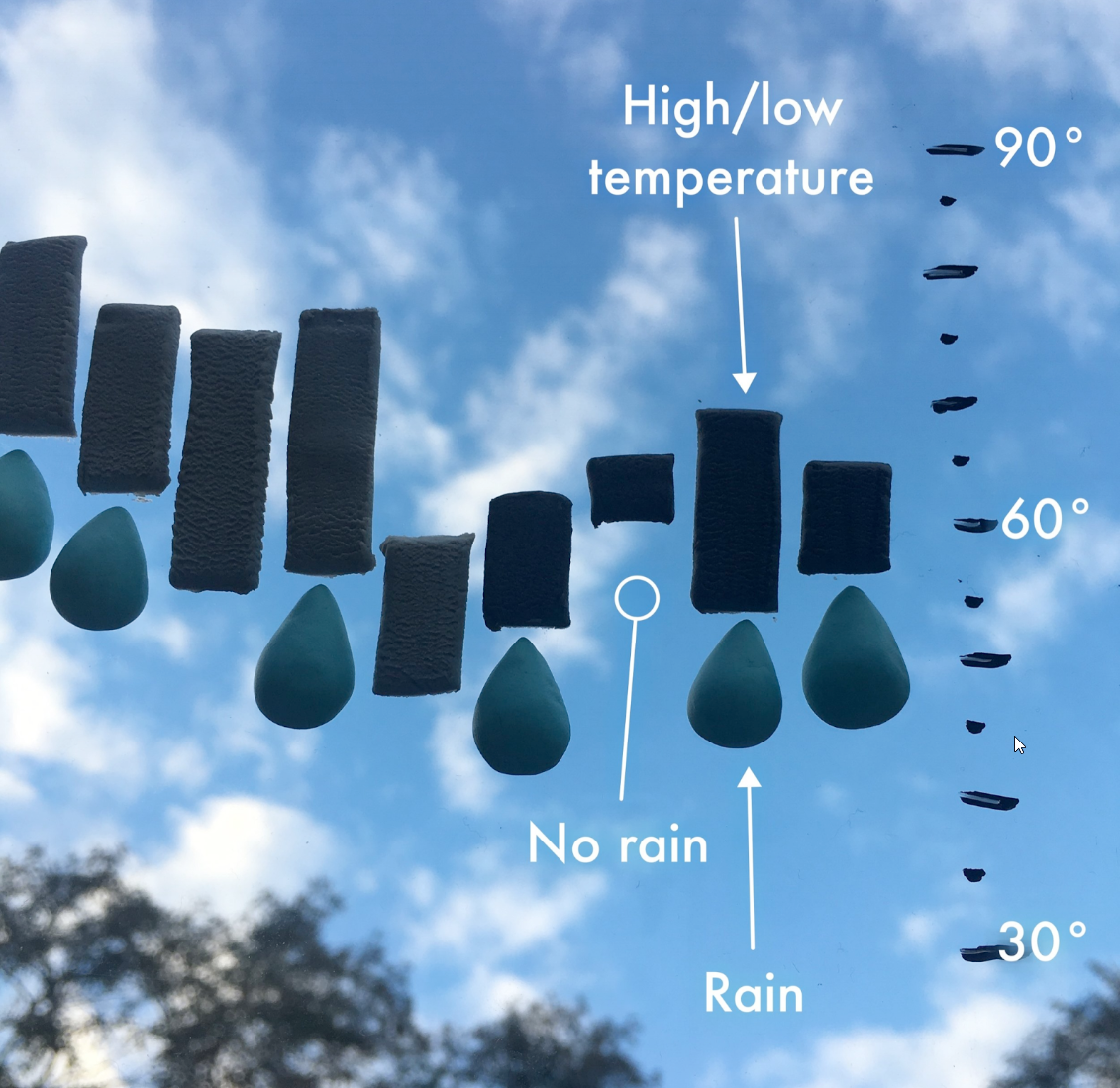Here at everviz, we strongly believe in the power of branding. That’s why we’ve built in full customization capabilities, so that you can align your charts and maps to your own brand identity.
This means you can use your own custom colors, fonts and logo to ensure your visualizations reflect your brand identity.
Our themes allow you to create templates which make it easy for your whole team to produce impactful charts and graphs that are consistent with your brand guidelines. But what exactly is brand consistency, and why does it matter?
What is brand consistency?
Brand consistency is the practice of ensuring that all your company outputs have a common visual appearance. This means consistent use of logos, fonts, colors and other visual aspects to ensure that your brand is represented in a consistent and recognizable manner. Branding is not just important for physical products; it is also necessary to ensure your company is represented in a consistent and attractive way across all media, both online and offline. This can include your website, emails, advertising, reports, and anything else that you might produce as a company.
This chart uses the everviz brand template to illustrate the importance of brand awareness in the internet age when a search engine can deliver so much choice. This survey found that brand familiarity was the basis for the top 3 reasons people gave for choosing which search engine result to click on first.
82% of people chose a known brand regardless of whether it appeared top of the search listings.
Benefits of brand consistency
- Brand consistency leads to brand recognition. This helps ensure your customers instantly recognize your products.
- Consistent branding and a strong identity helps to build trust and loyalty amongst your customers. If customers consistently have a positive experience with your product, they will want to continue using it. A consistent brand can help reinforce the idea that the product will always deliver on these expectations.
- A strong brand can be used to evoke positive emotions amongst consumers. Consistent branding combined with a carefully crafted message can help to generate positive associations with your brand.
- Brand consistency is important to differentiate your company from its competitors. In a highly competitive marketplace with many similar offerings, customer decisions are often made based on appearance. A consistent brand which delivers a clear message can ensure your company stands out from the crowd.
This chart uses the everviz theme to display the survey results in a clear and consistent manner. The tooltip reveals individual data points, allowing the survey detail to be reported without cluttering up the chart overview. The survey shows that he primary reason for customer loyalty is a good product, but having a great product isn’t enough. If you want to ensure repeat business, it is important to maintain a strong brand identity so that you are remembered and recommended to others.
How to develop a brand identity
A good brand needs to deliver the right message to your audience, but how do you determine what branding is right for your company?
- Start by defining your business strategy. What type of company are you? What sort of image do you want to present? For example, a toy manufacturer might aim for a fun and playful image while an accountancy might aim to come across as professional and reliable.
- Research your target audience. Who are your customers and what are their style preferences? If you are targeting businesses, then who are the key decision makers and what are they looking for?
- Research your competitors. How is your company different from others? Why will customers choose you? How can you ensure that your brand stands out from the others while delivering the right message?
- Develop your marketing strategy. How will you reach your target audience? Do you have a physical product? How will you develop an online presence? How will you make your brand visible?
Your brand identify is much more than just your company name and logo. You will need to consider your company colors, fonts, layouts, web design, advertising, packaging, and any other outputs that your company may produce.
Many of the top brands are instantly recognizable from their logo or even just their colors. The chart shows results from a survey where people were shown the logos of 100 top brands and asked to name and describe the ones they considered most memorable.
Maintain brand consistency by creating branding guidelines
Once you have decided on your brand identify you need to ensure this is accurately and consistently replicated throughout the company.
The best way to do this is to ensure the whole team is aware of the importance of brand consistency and to make it easy for them to comply with requirements.
Branding guidelines or a style guide can be useful as a rule book and point of reference for employees. Topics covered may include:
- Overview of the company vision, values and mission statement.
- Guidelines for logo usage: positioning, spacing, sizes.
- Color palette: information on company color schemes and how they should be used.
- Type styles: details of font types, sizes and headings for documents and web use.
- Writing styles: guidelines on writing styles for different audiences, rules around language use, tone, regional variations.
- Visualization styles: guidelines on styling of images, diagrams, maps and charts.
- Design layouts for different media and formats.
The extent and type of guidelines required will depend on the needs of the company, but the focus should be on maintaining consistency and brand recognition.
This visualization shows that while most companies have brand guidelines, relatively few are successful at implementing them consistently. It can be difficult to enforce the use of guidelines across different teams, but templates are a great way of making it easy for employees to adhere to the rules.
Brand consistency can be promoted within the company by using templates to simplify the process of adhering to the brand guidelines. Document templates with in-built fonts, colors and example text are a great way of ensuring that employees stay on-brand whether they are writing a technical report or producing marketing materials.
Brand consistency in visualizations
Visualizations such as graphs, charts, maps and other diagrams are used by many companies. Even if your company does not use visualizations in its regular marketing materials, it is likely that there will be occasions when you will need to present numerical data in a visual format. For example, graphs showing company performance or sales might be required for annual reports or when pitching for investment. Company metrics such as environmental performance or safety data might need to be published periodically.
Brand Considerations for Data Visualizations:
- Use of brand color palettes but without compromising on data readability or interpretation.
- Use of brand fonts for diagram text, chart axis and labels.
- Consistency with brand guidelines for layouts, spacing and titles.
- Consistency with other brand visual features (for example, use of rounded corners, shadows, or other visual effects).
This visualization shows the results of a survey on how customers feel about brands using social media, and whether they considered different activities to be ‘cool’ or ‘annoying’. The everviz template has been used for a consistent appearance, but alternative colors were selected from the everviz palette to reflect the nature of the response: light blue to represent ‘cool’, red for ‘annoying’.
It can be difficult to maintain brand consistency throughout graphs and other visualizations, especially where they are produced across different teams. But everviz makes it easy to share templates and themes so the whole company can generate consistent and impressive data visualizations.
How to use themes in everviz to ensure brand consistency
An everviz theme allows you to set your company brand requirements and easily replicate these across different types of visualization.
When you create a new everviz theme you can specify a wide range of different options that will be applied whenever the theme is used:
- You can specify the colors you wish to use, with the option to input the hex color code to ensure the exact color is selected.
- You can order the colors to ensure that preference is given to the brand’s primary color palette while also providing additional colors for use where needed.
- You can specify your visual chart preferences including line and marker types and how these are rendered on the screen.
- You can set default fonts for all the different chart elements (titles, axes, legends, labels, etc.).
- You can define the appearance of your interactive elements such as highlighted data points and tooltips.
- You can specify your preferred chart size and you can set a background color or use an image (for example you could display your company logo as the plot area background).
- You can customize your default borders, specifying the color, width and whether you prefer rounded corners.
- You can also define any localization preferences to account for any regional preferences such as language, date format, decimal and thousands separators, etc.
With everviz you can set up multiple themes for different purposes. When loading a theme, the default settings will be imported, making it really easy for the user to create a visualization that is consistent with brand guidelines.
However, everviz also allows the theme default settings to be overridden where necessary, giving users the flexibility to adjust settings for the purposes of data clarity while maintaining the brand appearance.
In this example, it is appropriate to substitute the brand default colors for colors which reflect the data points being represented. Intuitively, it is easier to see that red and blue are the most common logo colors when the columns are shaded the corresponding color. Consistency with company branding can be maintained through retaining other default settings including font types and layouts.
Other considerations when developing data visualization brand guidelines
In general, it is advisable to maintain some flexibility when applying company brand guidelines to visualizations. Factors to consider include:
Data integrity & legibility
It is important to ensure that the accuracy and clarity of the data is maintained. Sometimes the default brand guidelines might obscure the data or make the chart difficult to read; in this case it might be appropriate to override certain rules. For example, visual features such as rounded corners or shadows might be on-brand, but they might obscure data in a complex graph, so a decision might be made to omit these features while retaining other brand styling.
Accessibility constraints
It is important to ensure that visualizations remain legible and are accessible to all. Some people may not be able to distinguish certain color combinations, and so it might be appropriate to use alternative colors in some cases. Having a range of approved colors within the template or theme can be allow for flexibility in finding a combination that works for the data involved. A colorblindness simulator can be used to check that the visualization is clear for people with different color vision deficiencies.
Compatibility with difference devices
Your visualizations must be legible across different devices and screen sizes. Any interactive features must work with mobile devices, touch screens and mouse input. Visualization images can be difficult to interpret on a small screen, but luckily everviz automates the process of ensuring your charts adjust according to screen size. When developing your everviz graph, you can use the preview buttons to see how your chart will display on different devices.
Conclusion
In summary, these are some top tips to help you develop and implement your brand strategy:
- Develop comprehensive brand guidelines which consider all your company outputs, both physical and virtual.
- Use templates to facilitate the adoption of consistent branding throughout the company. Aim to make it easy to comply with brand guidelines by implementing templates for common activities such as reports, articles and data visualizations.
- Understand that there may be occasions where it is necessary to adapt the rules, this particularly applies to data visualizations where the application of brand guidelines should not be at the expense of data integrity. Allow for flexibility where necessary within certain constraints.
- Ensure your team are aware of the reasons for brand consistency. If they understand why, they are much more likely to follow the guidelines and they are also more likely to make an appropriate decision if the guidelines are not quite suitable for the occasion.


